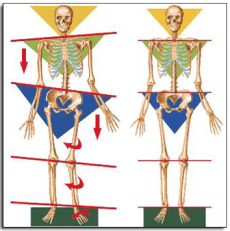Lower back pain is a complaint that most people will experience to some degree during their lives. Sitting, standing and running posture in combination with muscular imbalances and weakness in the lumbo-pelvic or “core” region have long been widely accepted factors.
The success of mobility, coordination and strength based treatment is evident in the growing popularity of clinical Pilates and Physiotherapy exercise prescription over the past 5-10 years.
But…….. Is it possible that your unassuming feet are playing havoc with the rest of your body??
First, let me fill you in on the engineering brilliance of the human foot; 26 bones, 33 joints, 20 muscles within the foot and 13 muscles acting on the foot via the leg, all of which harmoniously work together to perform coordinated, powerful movements step after step.
The foot is designed to absorb initial impact via rolling inward (pronation) and lowering through the arch, maintain a stable base of support then act as rigid lever to propel the body-weight forward.
Unfortunately the foot and its components do not always cooperate. Due to mainly genetic factors, the foot can exhibit varying degrees of mobility resulting in either too much “rolling in” or not enough, ultimately we are left with an impaired ability of the foot to absorb, support and propel.
A rigid high arch foot structure is notoriously deficient at absorbing shock resulting in excessive jarring forces transmitted through the lower leg, pelvis and lumbar spine.
An overly flexible foot with subsequent excess pronation and arch collapse has the tendency to “slap” the ground at initial contact, immediately zapping its powers of shock absorption and setting off a chain of biomechanical events that put your precious lower back in a vulnerable position…..
Excess rear-foot pronation will increase internal rotation of the lower-leg (tibia/fibula). This excessive inward “twist” of the leg progresses all the way through the upper leg, the pelvis and stress on the vertebral column.
The human body can be extremely resilient and adaptable. Therefore, even with a less efficient foot type some individuals remain functional without a hint of discomfort. For others it may be the underlying factor to years of chronic, debilitating back pain.
There are many ways to improve the function of your marvellous feet. They are a musculo-skeletal structure just like any other part of the body ie. “the core”.
The mobility, strength and overall function can be improved with tailored exercise. In some cases additional assistance through specific footwear, with or without foot orthotics may be required to further enhance their function, improve their capacity to absorb shock and protect your back from harm.
Gary Johnstone
Podiatrist- Up and Running Podiatry
Tel: 03 9645 2183

